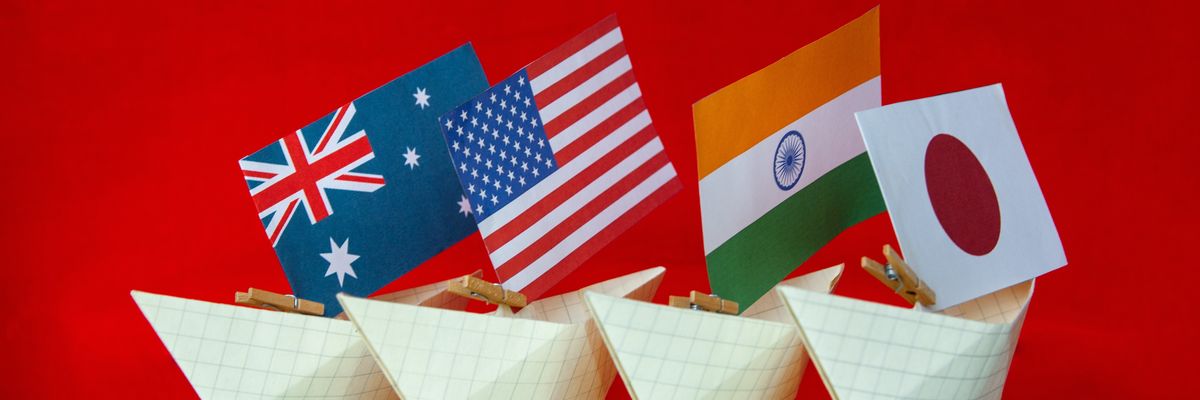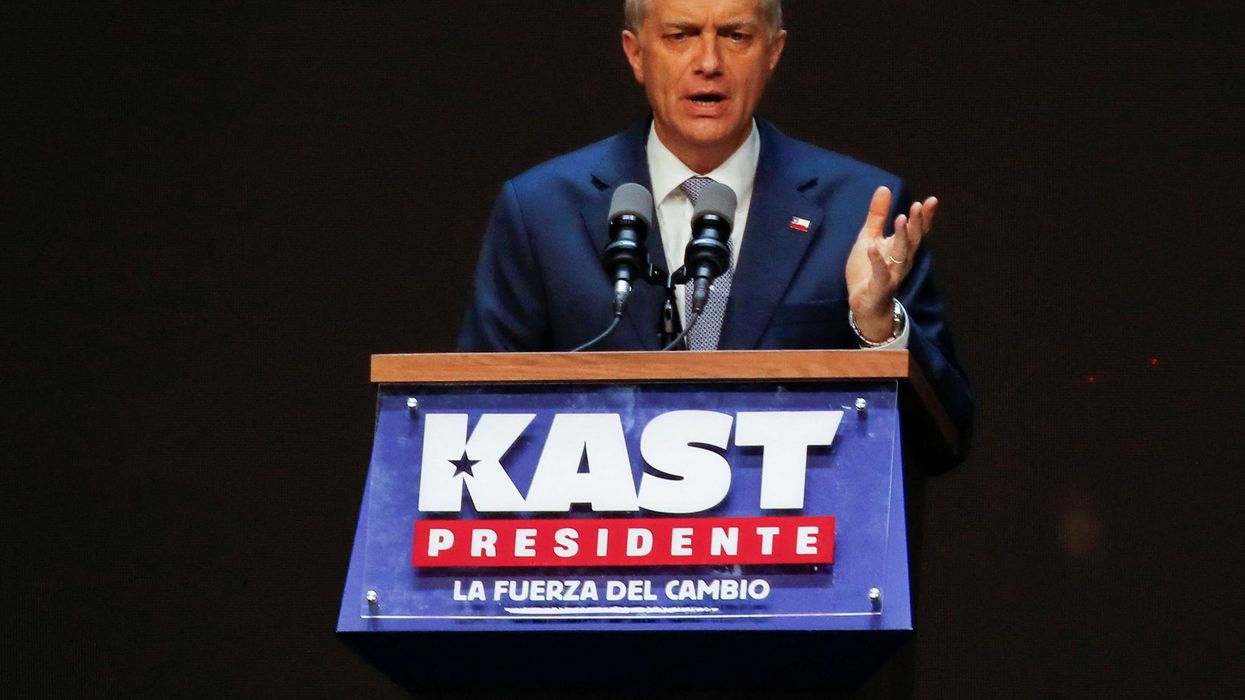The United States is undertaking a major effort to reinforce the imperial model that it has used to dominate Asia and the Pacific since the end of World War II.
Focusing on its hub-and-spoke model, which it has used to keep itself positioned as the dominant hub of the Pacific, the United States is engaging in simultaneous efforts to facilitate cooperation among its spokes, particularly its allies and partners. U.S. officials are seeking greater multilateral coordination with the spokes, primarily by strengthening regional groupings such as the Quad and fortifying regional alliances such as its trilateral alliance with Japan and South Korea.
U.S. efforts are aimed at building out the hub-and-spoke model in a way that strengthens U.S. dominance of the Indo-Pacific and clears a pathway for the creation of an Asian NATO.
“Our hub-and-spoke model of security in the Indo-Pacific has become integrated so those individual spokes now cooperate and collaborate in a more systemic way,” State Department official Richard Verma explained in remarks to the Hudson Institute in September.
The Hub-and-Spoke Model
Since the end of World War II, the United States has dominated Asia and the Pacific with a hub-and-spoke model. Under the model, the United States has functioned as a dominant hub that has projected its power through several spokes.
According to U.S. officials, the spokes consist of U.S. treaty allies and partners. They include five U.S. treaty allies, which are Japan, Thailand, Australia, South Korea, and the Philippines. They also include leading U.S. partners, which the Biden administration identifies as Taiwan, India, Malaysia, Singapore, Vietnam, Indonesia, Mongolia, New Zealand, and the Pacific Islands.
Reinforcing the model are additional extensions of U.S. power, such as U.S. states, U.S. territories, U.S. military bases, and the compact states. A critical component of U.S. power is Hawaii, which is home to the headquarters of the Indo-Pacific Command. This military headquarters currently oversees 375,000 military and civilian personnel, who are spread out across the region.
The hub-and-spoke model is the basis for an “informal empire” in Asia, as former U.S. official Victor Cha described it in his 2016 book Powerplay. Although Cha identified growing challenges to the model, particularly from China and its efforts to build China-centered regional structures, he insisted that the model remained the basis for U.S. regional power. He called it a “thread” that holds the regional architecture together.
U.S. officials have long valued the hub-and-spoke model for securing U.S. dominance of the Pacific, but they have never viewed it as an equal to NATO. Whereas NATO provides the United States with the ability to coordinate actions across the North Atlantic region, the hub-and-spoke model impedes multilateral cooperation across the Pacific, as it is built around bilateral relationships with allies and partners that do not always share common interests.
“We would like to see a good deal more cooperation among our allies and security partners—more multilateral ties in addition to hubs and spokes,” Robert Gates said in 2009, when he was secretary of defense in the Obama administration.
With the goal of building more multilateral ties, U.S. officials have been working to bring the spokes into multilateral groupings that embrace multilateral cooperation. Comparing the hub-and-spoke model to the wheel of a bicycle, they have said that they are trying to build a tire around the spokes in a way that holds everything together under U.S. leadership.
“We need to network better our alliances,” Cha advised Congress in 2017. “We need to build a tire around that hub and spokes.”
The Biden Administration’s Efforts
The Biden administration has accelerated U.S. efforts to complete the tire. Not only has it been putting major emphasis on the importance of U.S. allies and partners, but it has been leading multiple efforts to facilitate cooperation among the spokes.
One of the administration’s key moves has been to fortify a trilateral alliance among Japan, South Korea, and the United States. With both Japan and South Korea hosting tens of thousands of U.S. soldiers, the move enables the United States to more effectively coordinate its military activities across Northeast Asia.
“Japan and the ROK are two of our strongest and closest allies in their own right, but when we work together trilaterally, we are even stronger,” State Department official Daniel Kritenbrink explained last year.
In another major move, the Biden administration has elevated the Quad, a regional grouping that includes Japan, India, Australia, and the United States. All four countries are significant for having “big hammers in the militaries,” Secretary of Defense Lloyd Austin noted earlier this year. The Quad also extends U.S. reach to India, stretching U.S. influence across a vast region that ranges “from Hollywood to Bollywood,” as Vice Admiral Andrew Tiongson recently described it.
The highest-level officials in the Biden administration have repeatedly acknowledged they are working to build out the hub-and-spoke model. In May, Austin gave a major address in which he boasted that the United States is making progress in facilitating regional cooperation among the spokes. He marveled at what he called a “new convergence” that is “producing a stronger, more resilient, and more capable network of partnerships.”
In August, Austin collaborated with Secretary of State Antony Blinken and National Security Advisor Jake Sullivan on an op-ed in the Washington Post in which they explained that they had “upgraded” the hub-and-spoke model to create a new regional system that featured “an integrated, interconnected network of partnerships.” They presented their approach as a major improvement over the previously existing model, which had relied on individual partnerships. “Much like the hub and the spokes of a wheel, those individual partnerships didn’t overlap,” they explained.
Laying the Foundation for an Asian NATO
As U.S. officials have worked to foster multilateral partnerships, some Asian leaders have taken things a step further, calling for the creation of an Asian NATO. Although the Biden administration has dismissed such proposals, knowing they could lead to pushback from China, Russia, and nonaligned countries, its actions indicate that it is laying the foundation for the creation of some kind of multilateral alliance system.
By developing several regional groups that overlap and interconnect, the Biden administration is putting the United States into a position to eventually merge regional groupings into a single organization comparable to NATO.
When Verma described U.S. efforts at the Hudson Institute in September, he boasted that the Biden administration is making significant progress in combining the spokes. The Quad “actually takes the individual spokes, ties four of them together,” Verma said. There are “a number of other examples where we are much more integrated.”
Indeed, the Biden administration is confident that it is making progress in building out the hub-and-spoke model. Even with its focus on strengthening regional groupings, the administration is developing a network of overlapping partnerships that could lead to multilateral coordination among all the spokes.
What the Biden administration is doing, in short, is pushing ahead with a longstanding effort to complete an imperial model that has long been at the heart of the American empire in the Pacific and may one day bring NATO-style domination to the entire area.
This article has been republished with permission from Foreign Policy in Focus.
- NATO foray into Asia risks driving China and Russia closer together ›
- The Indo-Pacific is no place for NATO ›
















